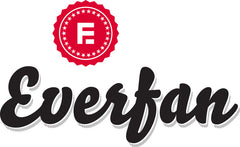The History of Renaissance Faires
Renaissance fairs (or "faires") are cultural events that recreate the atmosphere of the Renaissance period, typically focusing on the 16th century, though they often include elements from both earlier and later periods. These fairs feature entertainment, crafts, food, and activities that reflect the art, culture, and society of the Renaissance. They have become popular in the United States and other countries as both educational and recreational experiences. Here’s a brief history of how these fairs developed:
Origins in the United States
The first modern Renaissance fair in the United States is generally credited to have been started by Phyllis Patterson in 1963. She and her husband, Ron Patterson, hosted a small event in their backyard in Los Angeles, California, which they called the "Renaissance Pleasure Faire." The event was originally intended as a fundraiser for a local radio station and a way for Phyllis to bring her children and students to life through history and the arts.
Expansion and Popularity
The success of the Pattersons' event led to its expansion, and it became an annual tradition. The Renaissance Pleasure Faire grew significantly in size and popularity, eventually moving to larger venues to accommodate more visitors. The idea of a Renaissance fair caught on, and soon similar events began popping up across the United States.
Key Features
Renaissance fairs typically feature a wide variety of attractions, including:
- Period Performances: Live performances, including jousting tournaments, falconry displays, music, and dance, often based on or inspired by Renaissance traditions.
- Costumed Participants: Both fairgoers and staff often dress in period costumes, with characters ranging from peasants to royalty, knights, and mythical creatures.
- Artisan Markets: Stalls selling handmade crafts, including jewelry, pottery, clothing, and weaponry, reflecting the artistry of the period.
- Food and Drink: Traditional and themed food and drink, including turkey legs, mead, and other Renaissance-inspired fare.
- Educational Elements: Many fairs include demonstrations of period skills, such as blacksmithing, weaving, and other crafts, as well as historical reenactments.
Cultural Impact
Renaissance fairs have become an important part of popular culture, influencing the way people think about and engage with history. They provide an immersive experience that combines entertainment with education, allowing visitors to experience a romanticized version of the past. The fairs are also a haven for those interested in fantasy, historical reenactment, and performance art.
Modern Renaissance Fairs
Today, Renaissance fairs can be found across the United States and in other countries, each with its own unique flavor and focus. Some fairs maintain a strict adherence to historical accuracy, while others blend Renaissance themes with elements of fantasy, folklore, and even steampunk. They continue to attract large audiences, offering a space for people to explore history, creativity, and community.










